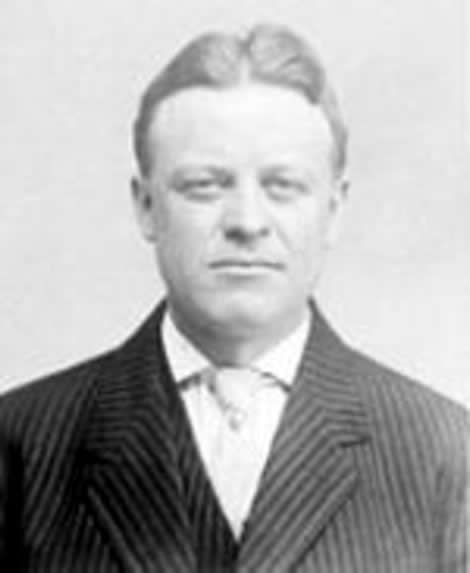 |
| Stock “geniuses” |
Wanna make it big in the stock market? Follow the mob financial experts. Bull market, bear market, the
wise guys always make out. They get hold of stocks that are bound to go up, just as certain stock analysts predict. They pick a stock at $5 and sell out quickly at, say, $8, for an impressive 60 percent profit.
The mob guys may not know how to read a balance sheet or a stock report, but they do know numbers. Predicting a stock's profits will soar is easy to do when they can pick their own numbers—or have rogue analysts do it for them. The incentive for such educated numbers people may be as simple as one of the mob's standard ways of influencing people—holding people out of a high window headfirst.
Actually, it is not difficult to get so-called experts to play the numbers game with their forecasts. In a February 2003 letter to Berkshire Hathaway shareholders, legendary investor Warren E. Buffett wrote, "Managers that always promise to 'make the numbers' will at some point be tempted to make up the numbers."
It was a lush field the Mafia couldn't miss out on. The fact that the feds were driving the mobs out of some of their traditional rackets, actually opened up the joys of
Wall Street for the boys. As one expert put it, "They used to have the number racket in Harlem. They used to have the Fulton Fish Market. They used to have garbage. They went seamlessly into Wall Street."
It must be admitted that the Mafia needed to be hit with a ton of bricks before they fully appreciated the potential. (It was the same thing at first about stolen jeans. The older mafiosi did not see the sense in stealing such "junk" as dungarees until they saw what younger customers were willing to pay for the stuff. That convinced them—and even got them to wearing jeans themselves.)
They finally noticed that the so-called Russian mob and certain other eastern European gangsters were getting into stock scams. They tended to concentrate on lower-priced securities not listed on major stock exchanges. The stocks were pushed by corrupt stock sellers who could find enough suckers to push up a stock to a point where the crooks could then pull out leaving the victims with huge losses.
These mobsters kept their salesmen allies in line with the threat of force. But it was only a matter of time until major Mafia families came on the scene, often having been approached by the corrupt stock people looking to get the East European gangsters off their backs when they began taking the lion's share of the profits.
It was of course too naive to think the Mafia in the long run would be fairer partners, but for a time the corrupt stock promoters usually considered themselves the major partners in the arrangement. They could indicate to the mobsters when certain operators would not join in the schemes, and the mob would apply their usual convincers, the threat of violence and when needed very harsh violence.
Quickly, the mobs saw far greater potential in stock frauds, and in the 1990s the six Mafia families in New York and Philadelphia were enlarging their toeholds on Wall Street. They may not have understood the theories behind junk bonds and derivatives, but a market for derivatives exceeded $100 trillion.
To the mobsters, especially the Colombos, Wall Street was an easily penetrated area with tons of money for the taking. They found it easy to take advantage of the kind of people who could be recruited in so-called chop houses, pushing worthless stocks. The time had passed when M.B.A.s and Ivy League credentials were vital to achieve success on Wall Street as far as unscrupulous brokerage houses were concerned.
Even a young punk with a moxie for fraud could become a stock hustling genius. Such was the case of 20-yearold Louis Pasciuto, who at the time was pumping gasoline in his native Staten Island, New York. He was found to be a genius at pushing stocks on unsuspecting buyers, mainly because he showed no compunction about stealing.
Young Pasciuto became very rich, especially since he had his "Mafia guy"—one Charlie Ricottone—who babysat him with protection that also extended to the management of the houses using Pasciuto. The "guys" also settled disputes between various chop houses, which meant eventually that they controlled many of the houses.
It was a wonderful world for Pasciuto. The mob took care of everything. An imposter was hired to take Pasciuto's National Association of Security Dealers exam for him. Pasciuto just lived the good life with a yacht, a Ferrari, and an impeccable wardrobe. Unfortunately, his relationship with his "Mafia guy" got messier and messier: The mobster wanted more and more money.
It was, of course, the standard never-ending Mafia shakedown. Unfortunately, Pasciuto was spending and gambling away money faster than he could steal it from his fat cat stock-buying victims. Ricottone, a veteran of the Colombo wars, was not pleased, so he just tightened the screws on Pasciuto. He suggested he would have to have Pasciuto's wife gang-raped.
As a result Louis grew more desperate and careless. He was charged with cashing bad checks and committing securities fraud. And his Guy was after him. Pasciuto decided to cooperate in 1999 and over the next few years helped the FBI and prosecutors make dozens of arrests of Mafia-affiliated brokers and extortionists in the next few years.
But it was doubtful that Pasciuto was little more than a drop in an ocean of stock thievery. Gary Weiss, a senior staff writer at Business Week, told Pasciuto's tale in a 2003 book, Born to Steal: When the Mafia Hit Wall Street, but he disputes the idea that the mob is or even can be gotten out of Wall Street.
He argues that organized crime may have played a major role in the spectacular rise—and then fall—of the financial markets. He sees organized crime still having a corrosive influence in the financial world. The honey in part is that mere $100 trillion floating around in the derivatives market alone. Clearly, the Mafia ain't leaving that.





























